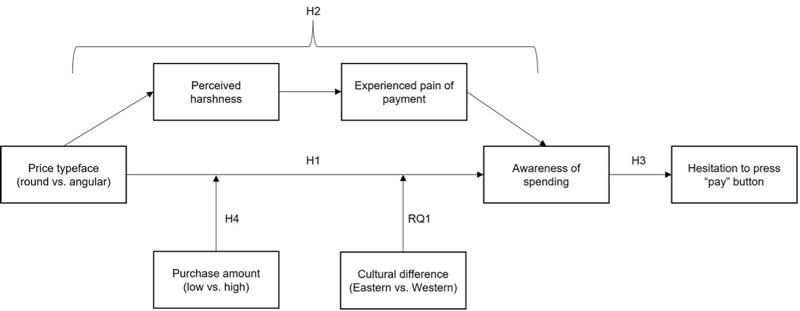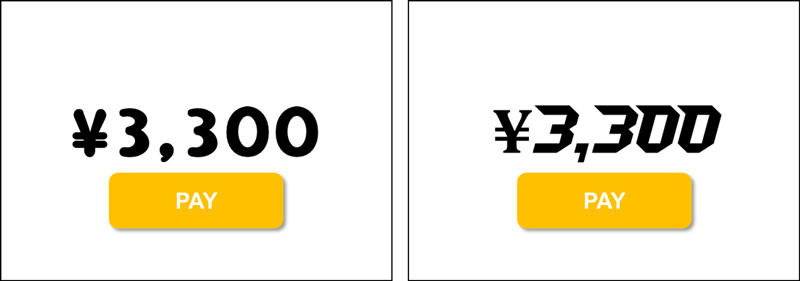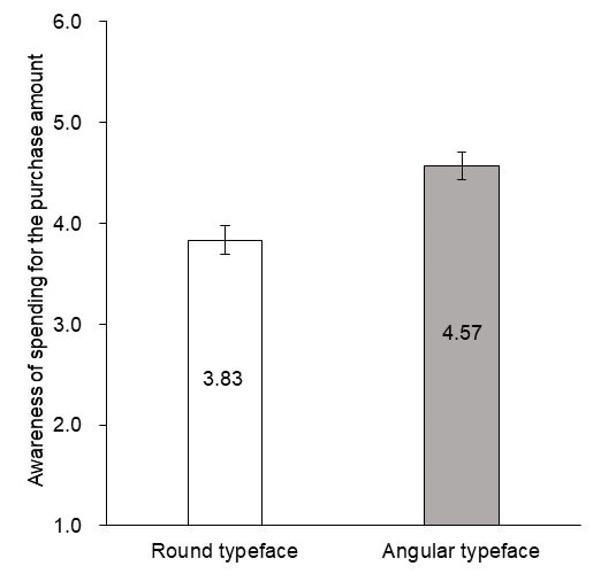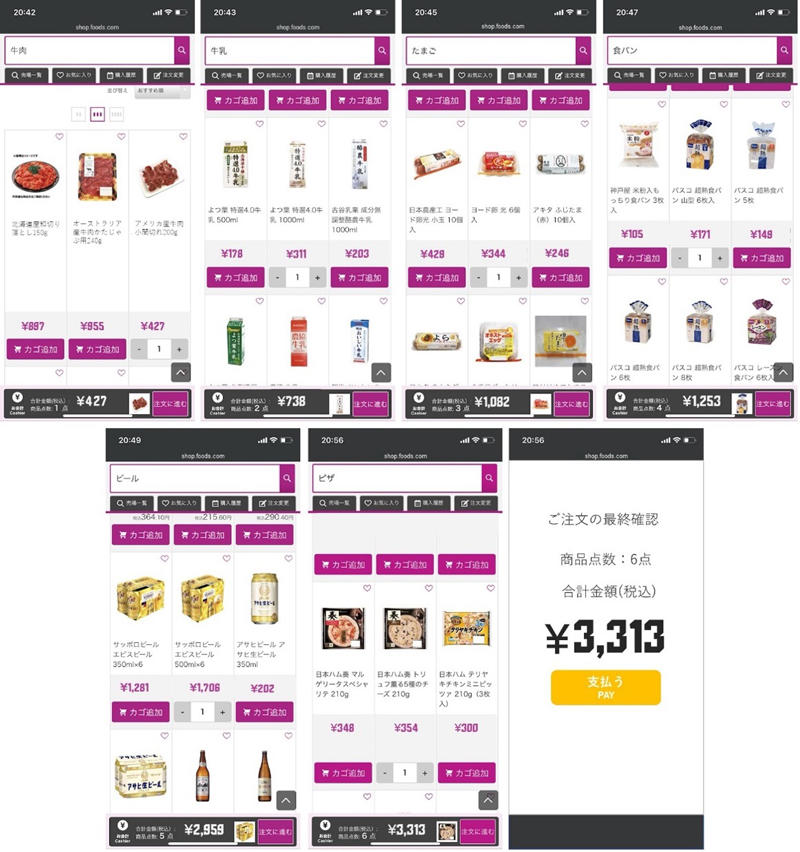How to Deal with the Diminished Awareness of Spending When Using Mobile Payment? Psychological Effect of Typeface Used to Display Amount
Jaewoo Park/Professor, Faculty of Commerce, Chuo University
Areas of Specialization: Consumer Behavior and Sensory Marketing
I have been engaged in sensory marketing research that explores the relationship between sensory appeal to the five senses and consumer product evaluation and purchasing motivation. Recently, I am also interested in the applicability of such sensory marketing to social issues and I am conducting related research. In this article, I would like to introduce a consumer psychology study which I had published in the journal Psychology & Marketing to deal with the diminished awareness of spending when using mobile payment[1].
Background and objective of research
The spread of smartphones and the development of communication technology is increasing the use of mobile payment in daily shopping. In addition, the COVID-19 pandemic was another factor that accelerated the social spread of mobile payment; that is, a non-contact payment method that is useful for preventing the spread of infection. The term "mobile payment" is to start, approve, and confirm payments for products and services using a mobile terminal[2]. Some examples of mobile payment are Apple Pay and PayPay. Currently, the global market for mobile payment is estimated at $1,450 billion (2020), and it is expected to increase to $5,400 billion in 2026[3]. It has been pointed out that the spread of mobile payment has the advantages of considerably increasing the efficiency of monetary transactions for both consumers and corporations, and contributing to the revitalization of consumption activities and economy[4]. On the other hand, it has also been pointed out that mobile payment may encourage consumers to engage in excessive spending. This is because not using actual money diminishes the awareness of spending[5]. There have also been reports that mobile payment heightens the consumption of unhealthy foods in addition to encouraging excessive spending[6]. My research focused on the issue of diminished awareness of spending due to mobile payment, and verified that the shape of the typeface used to display the amount spent had an impact on the awareness of spending through consumer experiments.
Payment method, shape of typeface used to display amount, and awareness of spending
The psychological pain felt by consumers when spending money differs depending on whether the payment is made in cash or via another method. According to previous studies, paying with cash causes the greatest amount of psychological pain, the use of credit and debit cards is moderately painful, and mobile payments are the least painful[7]. The reason why mobile payments are less psychologically painful is that this payment method does not require the consumer to take cash or credit/debit cards out of their wallet or to sign for payment; instead, they simply launch the mobile app to complete the payment.
People have an instinctive preference for rounded shapes and a dislike of angular shapes. Psychological studies show that people dislike angular shapes due to the negative reaction caused by a perceived sense of threat[8]. In my research, I focused on the perceived sense of threat caused by angular shapes. I established the research hypothesis that displaying the payment amount in an angular typeface rather than a round typeface intensifies the psychological pain experienced when spending, and that it therefore increases consumer's awareness of spending, and I used consumer experiments to test a series of hypotheses. Further details on my research model are shown below in Figure 1.

Figure 1: Research model
Overview and results of consumer experiments
In the consumer experiments, I created a fictitious mobile payment confirmation screen for online purchase of groceries. I then asked the participants to check the payment amount on the screen and answer related questions.
In Experiment 1, participants were asked to imagine the situation of purchasing groceries online. Participants were then presented with a screen displaying the payment amount (3,300 yen) in a round typeface or an angular typeface (Figure 2), and I had them answer the degree of their awareness of spending. As a result, I confirmed that even though the same monetary amount was displayed, the awareness of spending became stronger when displayed in an angular typeface (Figure 3).
In Experiment 2, I used a different payment amount (5,300 yen) to verify the mechanism of the effect exerted by the payment amount typeface on awareness of spending. As a result, I confirmed that the angular typeface strengthens the awareness of spending through a perceived roughness and pain of spending. I also confirmed that the awareness of spending strengthened by the angular typeface caused consumers to hesitate longer before pressing the confirm button.

Figure 2: Presentation stimuli in Experiment 1

Figure 3: Shape of typeface used to display the payment amount and awareness of spending (round typeface is on the left, angular typeface is on the right)
In Experiment 3, I verified the relationship between the monetary amount indicated in a certain typeface and the awareness of spending. As a result, when the payment amount was relatively small (5,300 yen), the typeface shape had a significant effect on the awareness of spending. On the other hand, when the payment amount was relatively large (15,300 yen), no significant effect was observed.
Experiments 4 and 5 focused on psychological studies indicating that Westerners have a greater preference for angular shapes compared to Asians[9]. With Americans for participants, I verified the awareness of spending for the payment amount typeface (amounts of $47.00 and $53.00). As a result, I confirmed that although the angular typeface strengthens the awareness of spending similar to the results of experiments for Japanese people, the effect is about 5.6 times weaker in Americans than in Japanese.
In Experiment 6, participants underwent a simulated experience of making a series of food purchases by using an experiment stimulus that closely resembled actual purchasing conditions (Figure 4). Once again, I verified the effect that the typeface used to display the payment amount had on the awareness of spending. As a result, I reconfirmed the effect of typeface as indicated in Experiment 1 to Experiment 5.

Figure 4: Presentation stimuli in Experiment 6 (angular typeface condition)
Summary
The six consumer experiments conducted in my research demonstrate that the awareness of spending is higher when the payment amount is displayed in an angular typeface instead of a round typeface. I also clarified that the strengthened awareness of spending is due to a heightened association with the pain of spending, which comes from the roughness felt from the angular typeface. Furthermore, I also confirmed that the effect of typeface on the awareness of spending is influenced by the amount of payment and by the cultural background (Asian or Western) of the consumer.
Discussions on the spread of electronic payments such as mobile payments have tended to emphasize the positive impacts on society; for example, contributions to the efficiency of monetary transactions and economic revitalization, and the prevention of the spread of infectious diseases due to contactless payments. However, if electronic payments become more widespread in society in the future, excessive spending due to the diminished awareness of spending may emerge as a major problem facing consumers. Although previous studies have pointed out how electronic payments cause a diminished awareness of spending and the associated possibility of overspending, there has been almost no research on specific ways to deal with these problems. By discovering that the shape of the typeface used to display the monetary amount has a significant impact on consumers' awareness of spending, I believe that my research has made a major contribution in demonstrating how sensory marketing can be an effective research approach for addressing the problem of overspending due to electronic payments.
[1] Park, J., Velasco, C., & Spence, C. (2022). 'Looking sharp': Price typeface influences awareness of spending in mobile payment. Psychology and Marketing. Early View. https://doi.org/10.1002/mar.21651
[2] Au, Y. A., & Kauffman, R. J. (2008). The economics of mobile payments: Understanding stakeholder issues for an emerging financial technology application. Electronic Commerce Research and Applications, 7(2), 141-164.
[3] Mordoer Intelligence (2021), Mobile payment market: Growth, trends, Covid-19 impact and forecasts (2021-2026). https://www.mordorintelligence.com/industry-reports/mobile-payment-market
[4] Tee, H. H., & Ong, H. B. (2016). Cashless payment and economic growth.
Financial Innovation, 2, 4.
[5] Boden, J., Maier, E., & Wilken, R. (2020). The effect of credit card versus mobile payment on convenience and consumers' willingness to pay. Journal of Retailing and Consumer Services, 52, 101910.
[6] Park, J., Lee, C., & Thomas, M. (2021). Why do cashless payments increase unhealthy consumption? The decision-risk inattention hypothesis. Journal of the Association for Consumer Research, 6(1), 21-32.
[7] Falk, T., Kunz, W. H., Schepers, J. J. L., & Mrozek, A. J. (2016). How mobile payment influences the overall store price image. Journal of Business Research, 69(7), 2417-2423.
[8] Bar, M., & Neta, M. (2006). Humans prefer curved visual objects. Psychological Science, 17(8), 645-648.
[9] Zhang, Y., Feick, L., & Price, L. J. (2006). The impact of self-construal on aesthetic preference for angular versus rounded shapes. Personality and Social Psychology Bulletin, 32(6), 794-805
Jaewoo Park/Professor, Faculty of Commerce, Chuo University
Areas of Specialization: Consumer Behavior and Sensory MarketingJaewoo Park was born in Seoul, South Korea. He completed the Doctoral Program in the Graduate School of Commerce, Hitotsubashi University (holds a PhD in commerce). He served as a Visiting Researcher in the Department of Experimental Psychology, the University of Oxford (2014). He held positions at Kobe International University (Full-Time Lecturer), Chiba University of Commerce (Full-Time Lecturer/Associate Professor/Professor), and Musashi University (Professor) before assuming his current position from 2021.
His areas of expertise are consumer behavior and sensory marketing. Recently, he has been conducting applied research on solving social issues by sensory marketing. He has published his research results in top academic journals in the fields of marketing and food psychology; for example, Journal of Consumer Psychology, Psychology & Marketing, Journal of Advertising, Journal of Retailing, Journal of Product & Brand Management, and Food Quality & Preference.
Please refer to researchmap for more information on research results.
https://researchmap.jp/parkjw?lang=en
A paper written with Professor Jaewoo Park as the first author was published in the first quarter journal Psychology & Marketing in the field of marketing.
https://www.chuo-u.ac.jp/english/news/2022/03/59817/








